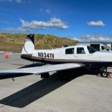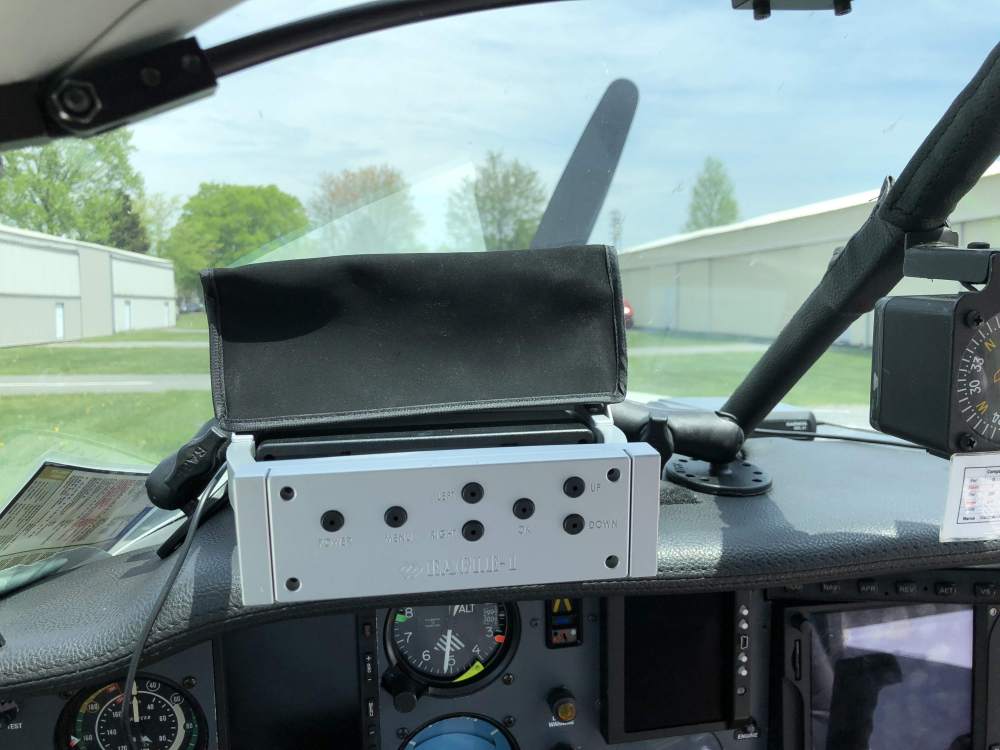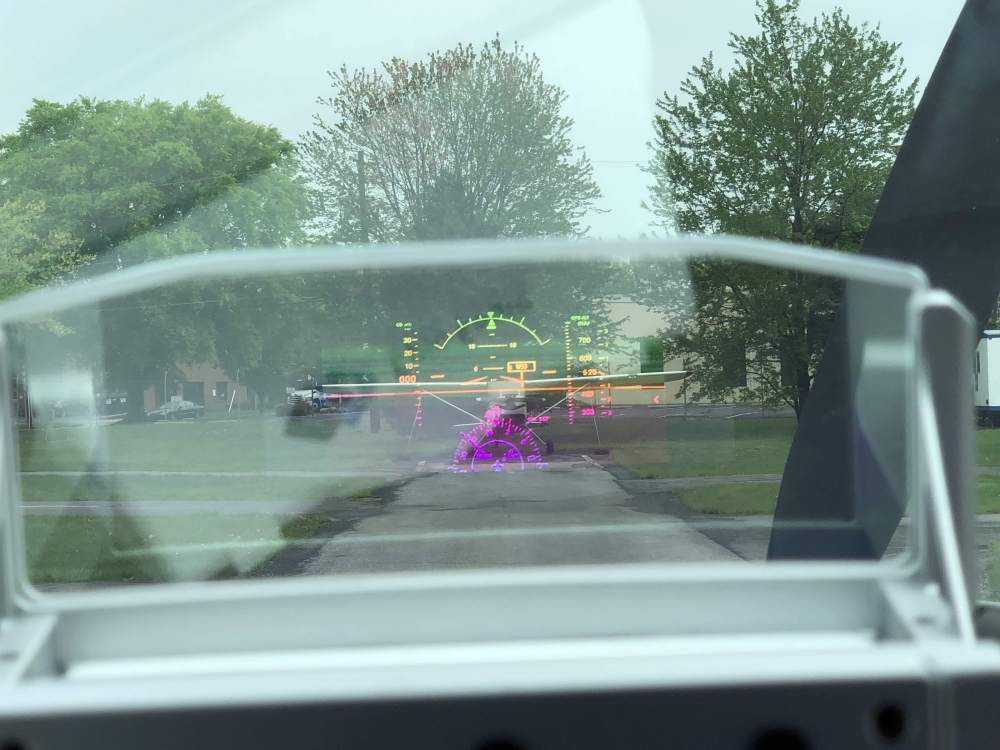-
Posts
2,677 -
Joined
-
Last visited
-
Days Won
5
Content Type
Profiles
Forums
Blogs
Gallery
Downloads
Media Demo
Events
Everything posted by Oscar Avalle
-
I tried both. My son goes to Tufts and I take him back to Boston or I pick him up. The ride from KBED to Cambridge is shorter and cheaper. It compensates for the more expensive fuel Sent from my iPhone using Tapatalk Pro
-
I would fly into KBED nice FBO and closer to Boston. Worcester is OK but farther away
-

When do you put the gear down?
Oscar Avalle replied to chrixxer's topic in Vintage Mooneys (pre-J models)
The other day I was flying an approach into St Louis Lambert International. Marginal VFR (ceiling 1200 and vs 4 miles). I was given the LPV approach and asked to keep up the speed. I kept up the speed until glide slop intetercet and lowered speed to gear down speed and flaps white arch. I keep the speed at close to the maximum flaps and gear speeds and once I was over the threshold and I had the huge runway in front of me I lowered my speed and flared. After I landed I kept up my roll out speed and turned into the first available taxiway. Tower thank me for my help... So my conclusion is they know what the reasonable limits of a single engine plane are. They expect you to be proficient and show that you are trying to help. But they don't want you to do anything crazy. Generally speaking, when I enter on a downwind I do my first GUMP check midfield, that gives me time to get establish adjust trim, etc. Second GUMPS check on base on last on final. When I enter on a base or on a long final I lower the gear as soon as I reach pattern altitude (no specific reason why). On IFR approach Non precision FAF and precision Glide slop intercept. -
I don't have a solution but I had a similar problem with my GDL 51. It interfered with the COM part of the 750
-

Landing Gear Advise M20F Electric
Oscar Avalle replied to all4thekidz's topic in Vintage Mooneys (pre-J models)
The gear down cable is a problem. I ordered it from Mooney and I never received it. I would call around and try to get one a savage part dealer. Call Jerry Presly for example 1 423 231 3491. Jerry is a great guy and he was able to get one for my M20C. -
Well, I used Signature at KSTL. Was it cheap, no. Did it make financial sense, no. Could I have used a cheaper option, most likely yes. But, then my family flew commercial, I wanted to have my rental car at hand and all worked out well in terms of how convenient it was. To be fair, my M20C, as much as I like her, was not the target. I had a Cirrus Jet, two Gulftreams ,three Citations and a lonely SR 22T parked with me on the ramp. But then, the attention was great, the coffee was good and the cookies were also tasty. Of course the bill was a shocker. Now, on my way to Saint Louis,. I stopped at I69, I wanted to visit Sporty's operations. Quite impressive!!! Highly recommended. But the nicest thing about it was the treatment...After fighting a 48 Kts headwind right on the nose, I was tired and decided to stay and continue next morning. So I asked about hotel options. I was given a piece of paper with some hotel options and great prices. I called got a nice rate in a Holiday Inn. Then I asked if I could get a taxi or if Uber was available. The lady at the counter told me to use their crew car and that I could keep it until the next day! The car was a newer Ford Edge SUV... I took the car asked them if I had to pay for anything, the answer was NO, just enjoy the rest of the day. There is an interesting WWII Museum on the field, I enjoyed myself and rested at the hotel. Of course I purchased some stuff at sportys and next day I left... Conclusion: Small airport, nice and great service: free. However, I was away from the city. Big airport, nice and great service too, but you pay for the location and convenience. Oscar
-

Base a Mooney close to Manhattan
Oscar Avalle replied to xavierde's topic in Miscellaneous Aviation Talk
While I was living in Manhattan, I had my Mooney based at Caldwell (KCDW). Tie down of course. Hangars where not available. But it was a great airport. -

Frustration; ETE at 1:00 for 20 minutes
Oscar Avalle replied to TTaylor's topic in Miscellaneous Aviation Talk
Last week I flew from Washington DC to St Louis Missouri... 8,000 feet... on average 42 kts headwind... Really slow..... Yesterday, I flew back and I was looking for those same headwinds... well, NO only 15 kts. Go figure. -
Yes, that would be great. Any idea why they don’t ? Sent from my iPhone using Tapatalk Pro
-
As some of you may have noticed, I like being an early technology adopter. I was always wondering why is it that we can't have a reasonably priced HUD for our airplanes? I saw several announced or showcased, including at Oshkosh and Sun and Fun, but they were to basic or to expensive. But the other day I was browsing AOPA's www side and I saw that a new company epicoptix from Annapolis was advertising this HUD. https://epicoptix.com/epic-eagle/ I looked at their ad and I decided to take a chance and I ordered it. I received the unit and my first impression was: wow. Nicely packaged and build. But then I tried out the unit and to my dismay the unit did not work well. Somehow the display was showing some noise. So I emailed the company at 9 PM and to my surprise I got an email from the CEO of the company at 915 PM apologizing and asking what the problem was. I called him and he offered to meet me in Washington DC, but I decided that it would be more interesting to visit them in Annapolis. So I went there and met this start up established by some former Navy and Boeing guys. They are great guys and committed to creating a great product. They exchanged my HUD and we tried it out. What it basically does is project the image of your Ipad or phone (Android or Iphone) on the HUD. I tried several options, Garmin Flight, Foreflight SV, etc. but the best option is the combination of Stratus Horizon with the HUD. This week I flew with the HUD for about 6 hours on a long cross country from Washington DC to St Louis. How does it work? I was really impressed it works very well, however unfortunately the projection options are not ideal. All apps (Foreflight, Garmin and Stratus Horizon) only project GPS and AHRS data. As far as I know you only get GPS grounds speed and altitude, but not IAS, TAS or Pressure altitude. The images are not ideal, it is very difficult to film a HUD image. hud.mp4 hud.mp4 The unit has a huge potential if Aspen or Garmin would allow us to project their data on our Iphones and then on the HUD it would be simply fabulous. In the meantime I am satisfied with it, but it usability is limited by the information I get through our apps. Oscar
-
Yes, much harder, but stable Sent from my iPhone using Tapatalk Pro
-
I am in the same boat trying to juggle a move and the wish to go Sent from my iPhone using Tapatalk Pro
-
yes
-
Just to give you an update. The shop that installed my Garmin GPSs (they are out of business) used the wrong splitter and incorrectly wired the COM. Smart Avionics (Ben) at N71 was able to squeeze me in today and solved the issue. He installed a new Garmin Splitter and rewired COM 2. Everything is working fine.
-
I went flying today everything looked ok, until I tried to dial in the ILS 08 in my GTN 750 ... To my surprise it did not work, it did not lock in nor was I able to ID it... Neither did it work on my on GTN 650... I tied to dial in the VORs and could not ID them too. COM2 was also dead... only COM 1 on my GTN 750 worked. And the GPS on the GTN 750 and 650 were working well. So I just switched over to GPS and flew back. Now, after landing on the ground I could faintly hear the AWOS on COM 2. I believe it must be an Antenna connection, any other suggestions? Oscar
-
I watched most of his videos over and over again. I remember sitting in the airport of La Paz, Bolivia, watching his instrument flying videos. He made me feel that there is some much to learn, but that I could do it... It is a sad day, but at least he is now with Ann his perfect copilot.
-

Southwest Uncontained Engine Failure
Oscar Avalle replied to Marauder's topic in Miscellaneous Aviation Talk
Yeah, the same thought crossed my mind... but then I never flew a plane with Radar... NEXTRAD is the closest I got to it and I have to admit I am still learning. Mistakes are human... but still his story is impressive. Thanks for the pictures. -

Southwest Uncontained Engine Failure
Oscar Avalle replied to Marauder's topic in Miscellaneous Aviation Talk
Talking about incredible professionals, I met the other day a Gentleman called Carlos Dardano from El Salvador. He flies now for Avianca, but in the past he was a pilot for TACA. During the civil war in El Salvador he lost an eye in combat, but despite all that, he was able to get his ATP and was hired to fly TACA's Boeings 737. This is this story according to Wikipedia: The aircraft, a Boeing 737-3T0 (tail number N75356, serial number 23838), had first flown on January 26, 1988, and had been in service with TACA for about two weeks.[2] On this day, the flight proceeded normally, taking off from Belize City's Philip S. W. Goldson International Airport and flying over the Gulf of Mexico toward the Louisiana coast. The airliner was the 1,505th Boeing 737 manufactured, and was originally acquired by TACA from Polaris Aircraft Leasing in May 1988. The captain of the flight was Carlos Dardano. At just 29 years of age, Dardano had already amassed 13,410 flight hours. Almost 11,000 of these hours were as pilot in command. The first officer, Dionisio Lopez, was also very experienced, with more than 12,000 flight hours logged. Captain Arturo Soley, an instructor pilot, was also in the cockpit, monitoring the performance of the new 737. Incident[edit] Investigation by the National Transportation Safety Board (NTSB) revealed that during descent from FL 350 (about 35,000 feet or 11,000 metres) in preparation for their impending arrival at New Orleans' Moisant Field, Captain Dardano and First Officer Lopez noticed areas of light to moderate precipitation in their path, depicted as green and yellow areas on their weather radar, as well as "some isolated red cells" indicative of heavy precipitation to both sides of their intended flight path.[3] The flight entered clouds at FL 300 (about 30,000 feet or 9,100 metres), the crew selecting "continuous ignition" and turning on engine anti-ice to protect their turbofan engines from the effects of precipitation and icing, either of which is capable of causing a flameout, where the engines lose all power. Despite flying a route between the two areas of heavy precipitation shown on radar, they encountered heavy rain, hail, and turbulence. Passing through 16,500 feet (5,000 m), both engines flamed out, leaving the jet gliding with neither engine producing thrust or electrical power. The auxiliary power unit (APU) was started as the plane descended through 10,500 feet (3,200 m), restoring electrical power. While attempts to "windmill start" the engines using the airflow generated by the plane's descent were unsuccessful, the pilots were later able to start them using the engine starters, which were powered by the APU. However, neither engine would accelerate to normal idle speed, much less to a point where it was producing meaningful thrust. Attempts to advance the throttles only resulted in overheating of the engines, so they were once more shut down to avoid catastrophic failure. The pilots landed the airliner in an unpowered glide on top of a narrow grass levee adjacent to NASA's Michoud Assembly Facilityin the Michoud area of eastern New Orleans near the Gulf Intracoastal Waterway and brought the airplane to a safe stop.[3] Investigation and recommendations[edit] NTSB investigators determined that the aircraft had inadvertently flown into a level 4 thunderstorm and that water ingestion had caused both engines to flame out despite their being certified as meeting Federal Aviation Administration (FAA) standards for water ingestion. The aircraft suffered mild hail damage, and its right-side (number 2) engine was damaged from overheating.[3] Initially, it was planned to remove the wings and transport the airplane to a repair facility by barge, but Boeing engineers and test pilots decided to perform an engine change on site. The aircraft was fueled to the minimum amount needed and departed from the roadway built atop the original runway at the facility.[3] Following takeoff, the 737 flew to Moisant Field, where further maintenance work was performed. The plane was then returned to service. The plane flew in active service for Southwest Airlines as N697SW from 1995 and was retired in December 2016.[4] To avoid similar problems in the future, the engine manufacturer, CFM International, modified the CFM56 engine by adding a sensor to force the combustor to continuously ignite under heavy rain and/or hail conditions. Other modifications were made to the engine nose cone and the spacing of the fan blades to better deflect hail away from the engine core. Also, additional bleed doors were added to drain more water from the engine. -
Great, because it stopped working for me too
-
I read somewhere that the likelihood of getting a headwind is always higher than a tailwind. It was a very interesting and compelling argument, just don't ask me to explain it. But the truth is most the times flying the NE corridor you encounter a headwind with a crosswind. May be somebody could explain it... Oscar
-
here it goes https://www.google.com/search?rlz=1C1GGRV_enUS752US753&biw=1280&bih=562&tbm=isch&sa=1&ei=nxLfWpv3GY-Q_Qaay77QDw&q=mooney+wing+strength&oq=mooney+wing+strength&gs_l=psy-ab.3...21785.24217.0.25385.7.6.1.0.0.0.52.278.6.6.0....0...1c.1.64.psy-ab..0.0.0....0.qeQ8ITWBEKg#imgrc=K7V9MWjz8xTMYM:
-
Look at this old picture it shows how strong our wings are... https://goo.gl/images/VYVprx

_(1).jpg.5ab16a44c7690371bd4d439613867d03.jpg)



